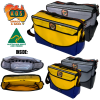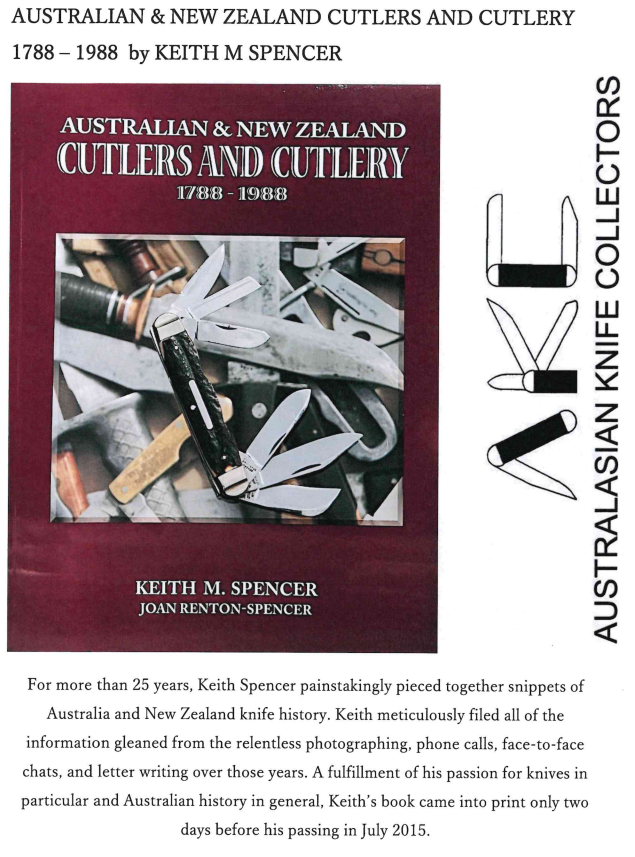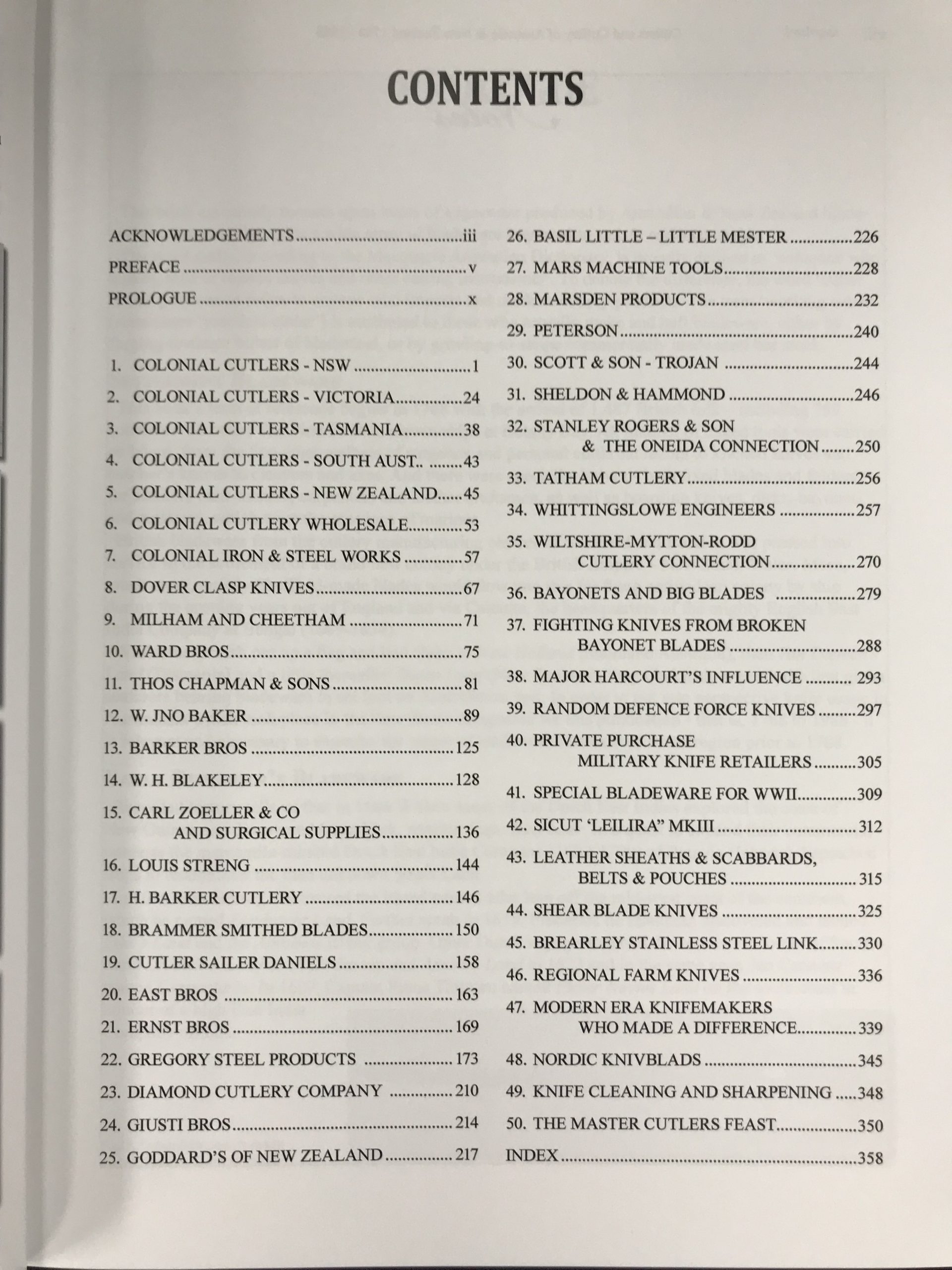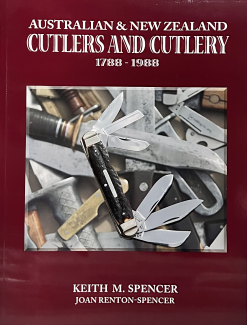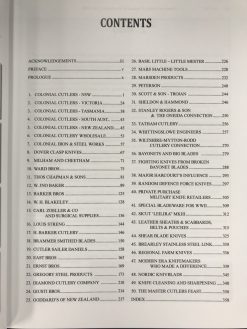$74.95 inc GST
After 25 years of researching, photographing and writing, following up on leads and information sent in to us, chatting on the phone and at knife shows, letter writing back before email existed, plowing through dusty references in state libraries across Australia and New Zealand, and hours and hours of electronic research and correlation of facts, it’s finally done. To those who have offered assistance over the years … a big thank you.
Contains 50 chapters, 372 pages, and 100’s of black and white photos, illustrations and newspaper advertisements, with an index and bibliography included. The soft cover book weighs in at a hefty 1.3kg.
Readers will find the history of Australian and New Zealand bladeware manufacturing and importing a fascinating journey of discovery as they delve across the facts, figures and photographs from the past.

